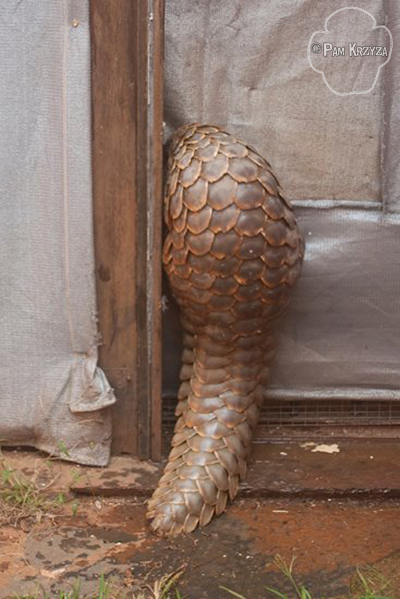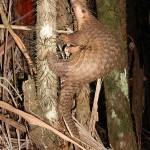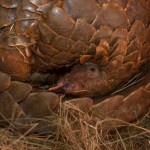Philippine Coast Guard officials have seized 20 kilograms of pangolin flesh.
According to the Business Mirror, the authorities discovered the four chunks of flesh in an ice box during a mandatory pre-departure inspection of a vessel, called the MV Josile-2.
Though the final destination of the shipment was not stated, the report indicates that the boat was in route to Palawan.
Reports did not indicate which pangolin species the flesh came from, but it is worth noting that one species — the Philippine Pangolin (locally known as ‘balentong’) — is endemic to the island nation.
Currently listed as ‘Near Threatened‘ on the International Union for the Conservation of Nature (IUCN) Red List of Threatened Species, an increase in poaching of this species is likely explained by severe reductions in the now endangered Chinese and Sunda pangolin populations caused mainly by overhunting.
Earlier this year, officials made two pangolin busts in the Philippines’ Puerto Princesa.
In the first of the two, authorities arrested a Chinese national — believed to have been responsible for the slaughtering hundreds of the scaly anteaters for black market trade — and seized 95 kilograms of pangolin scales and 26.5 kilograms of their flesh.
Later, the Philippines’ Crime Investigation and Detection Group (CIDG) raided the ‘Lucky 7′ junk shop (also in Puerto Princesa) and seized another seven kilograms of scales.
It was unclear if the two incidents were related.
Pangolin crisis worsens
An estimated 41,000 (and perhaps as many as 60,000) pangolins were poached from the wild in 2011 alone and already hundreds have been seized so far this year.
The demand for scaly anteaters stems primarily from China and Vietnam, where the flesh of adults and fetuses is considered a delicacy and is also eaten for supposed ‘health benefits’, such as kidney nourishment.
Additionally, traditional Chinese medicine consumers superstitiously believe ingesting concoctions derived from pangolin scales (and other parts of their body) can reduce swelling, improve liver function, promote weight loss, stimulate blood circulation, enhance lactation in breast-feeding women, and even cure cancer, among other things.
There is no scientific evidence to support any of the medicinal claims made about pangolin body parts.
In fact, rhino horn and pangolin scales (much like our own hair and nails) are chiefly composed of keratin and studies have repeatedly shown rhino horn to be void of any curative properties.
‘Medicinal use’ pangolin farms in China are thought to have stimulated the demand for these imperiled creatures.
Read more about the illicit trade in pangolins here.
Author: Sarah Pappin. Read more about Sarah here.
Image ©Pam Krzyza




![Pangolin Trafficking: 2011 to October 2013 [Infographic]](http://pangolins.org/wp-content/uploads/2015/08/WorldPangolinDay2013-01-copy-150x150.jpg)

Comments are closed.